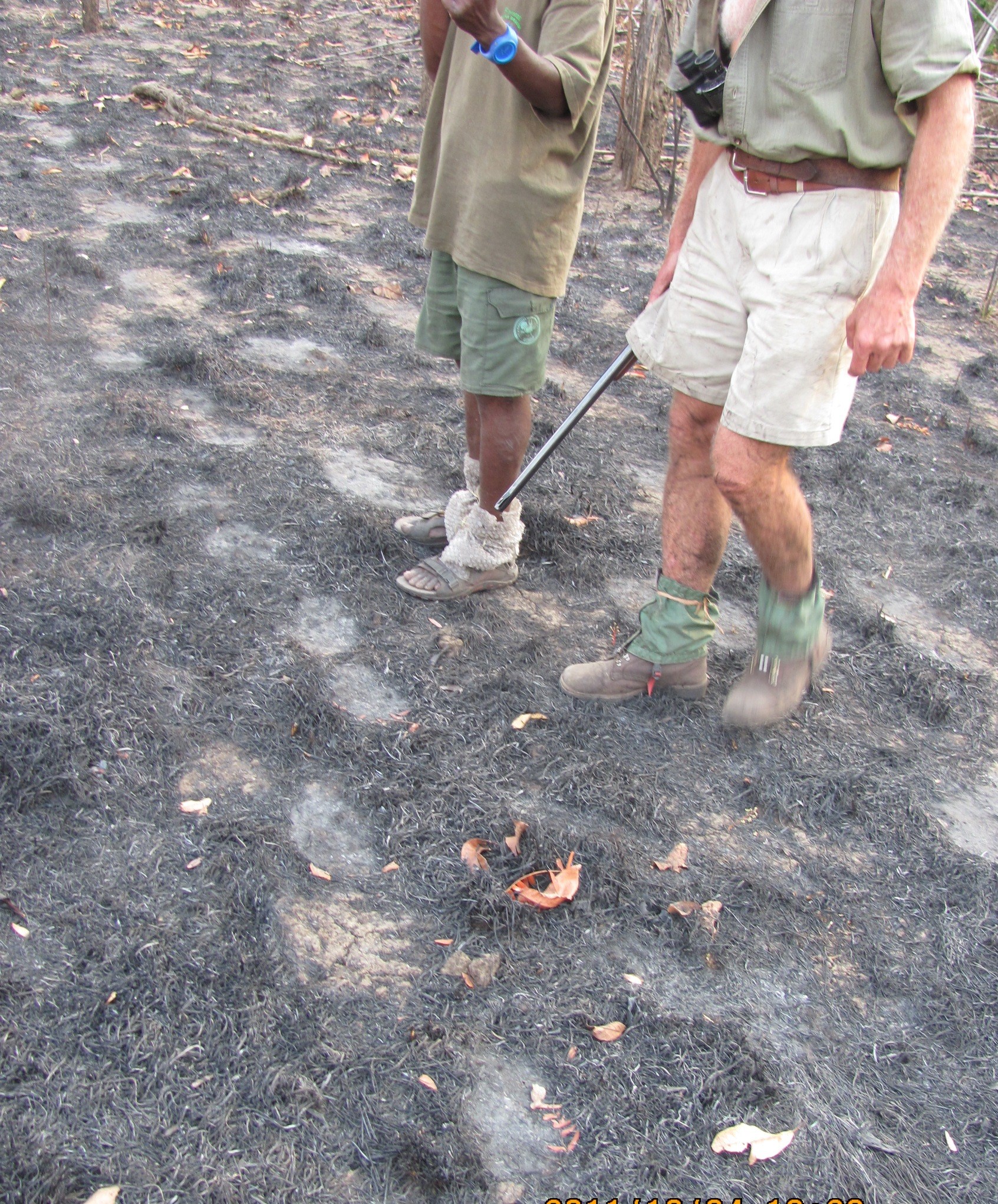A small breeding herd of elephant; six cows, with two sub-adults, one a young bull. We would fairly regularly come across such evidence of their wanderings – breeding herds, single bulls, small bull groups, and usually just take note with a brief flutter of excitement, perhaps a passing remark. But it was the baby tracks that made me pause here – actually of two, one no more than a week old, the other a month, or so.
Perhaps it was just a rare frame of mind I was in – a kind of reflective tenderness, for this subtle evidence of new life, so fragile and vulnerable, yet already swept along in the merciless struggle for adult identity – nay, for mere survival in this often brutal land? Perhaps it was for my own daughters, somewhere far away, equally vulnerable, unreachable for now, but hopefully safe, and able to find some joy in their circumstances?
This small herd had passed here during the night from the water hole some three kilometres away. Towards the end of the dry season, when grazing becomes depleted around the water holes, elephant would use the cool of night to come and drink, then move back to where they can find food, sometimes tens of kilometres away. Elephant walking with purpose could maintain a speed of 12km/h or more, so they can cover huge distances in relatively little time. But this little herd, we could see from the tracks, had moved at a relatively relaxed pace – because of the babies. It would require special ingenuity from the matriarch to keep her family fed and watered over the longs distances involved with the babies in their midst.
Where they eventually find food, they would forage through the early morning up to around midday, then rest in deep shade if they could find any, standing up, sometimes rumbling or squeaking at each other, gently fanning their giant ears to cool off. I have heard told of elephant lying down to sleep, and recently a Facebook companion, Julian Brookstein, shared a post (https//m.facebook.com/story.php?story_fbid=2989394634425624&id=161292483902534) where he found a whole herd fast asleep on their sides. But I have never had the good fortune to witness this.
Be that as it may, under these circumstances they would rest till about three. Then some more foraging through the afternoon till the African heat has evaporated some, and then the march to the water, perhaps every second night, or so. For this little herd, because of the babies, perhaps spaced out more.
And so the cycle would repeat, until the matriarch reads the signs and decides it’s time for a new survival strategy – perhaps move away to another place that she has stored in her long memory; perhaps to one where she sensed rain had fallen – it is thought that elephant can detect the very low sounds of thunder activity over vast distances during the cool of night, some think a far as 100 to 150km (or more) away, through sensitive nerves in their feet.
What has been well established is that they can detect each other’s low rumbling sounds (made through special adaptations of their vocal tract at frequencies well below our hearing) over huge distances – ten kilometres or more when it is cool.
They actually produce a wide range of sounds, only some audible to us. So, how can we ever know the rich communications, perhaps approaching conversations, happening inside the herd and between herds many, many kilometres apart?
The unspoilt bush is just an endless well of wonderment!


Kon nie wag tot bedtime om te lees nie. Het gecheat en gelees voor my middagslapie :) So mooi:
“Perhaps it was just a rare frame of mind I was in – a kind of reflective tenderness, for this subtle evidence of new life, so fragile and vulnerable, yet already swept along in the merciless struggle for adult identity – nay, for mere survival in this often brutal land? Perhaps it was for my own daughters, somewhere far away, equally vulnerable, unreachable for now, but hopefully safe, and able to find some joy in their circumstances?”
LU Pappa